White catfish
-
Scientific NameAmeiurus catus
-
NativeNo
-
Identification
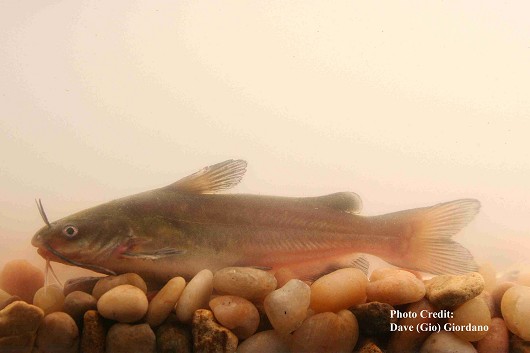 White catfish, approximately 15 cm (6”) long. Location: Suisun Marsh, California Date: 8/6/2007.
White catfish, approximately 15 cm (6”) long. Location: Suisun Marsh, California Date: 8/6/2007.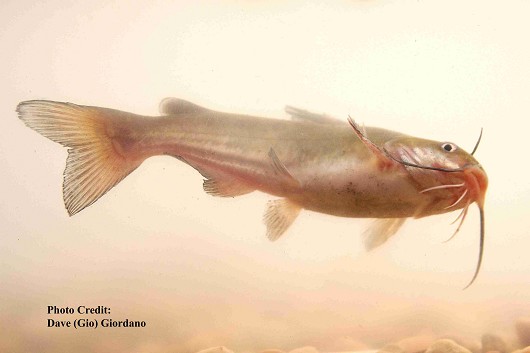 White catfish, approximately 15 cm (6”) long. Location: Suisun Marsh, California Date: 8/6/2007.
White catfish, approximately 15 cm (6”) long. Location: Suisun Marsh, California Date: 8/6/2007.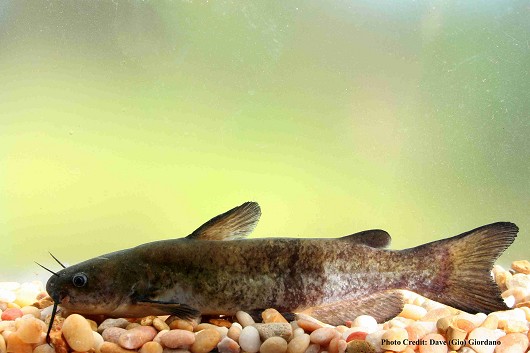 White catfish, approximately 21 cm (6”) long. Location: Deer Creek, California Date: 6/20/2007.
White catfish, approximately 21 cm (6”) long. Location: Deer Creek, California Date: 6/20/2007.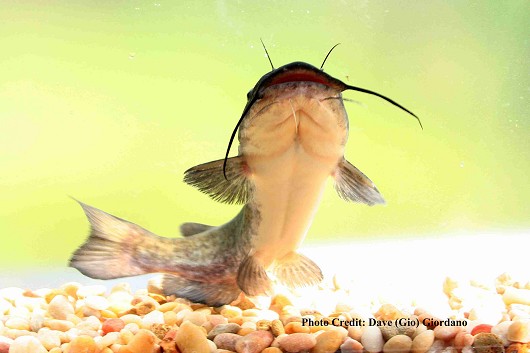 White catfish, approximately 21 cm (6”) long. Location: Deer Creek, California Date: 6/20/2007.
White catfish, approximately 21 cm (6”) long. Location: Deer Creek, California Date: 6/20/2007.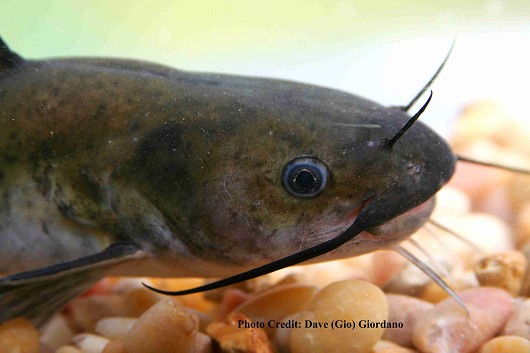 White catfish, approximately 21 cm (6”) long, view of head. Location: Deer Creek, California Date: 6/20/2007.
White catfish, approximately 21 cm (6”) long, view of head. Location: Deer Creek, California Date: 6/20/2007.- Stout body
- Forked tail with rounded lobes (top lobe longer than bottom)
- Terminal mouth with 1 dark barbel on either side and 4 white chin barbels
- Gray-blue to blue-black on the back and sides and white on belly, occasionally mottled
- Can be pale when found in very turbid waters
- 5-6 soft rays in the dorsal fin
- 22-25 rays in anal fin
- Pectoral fins have 8-9 soft raysand a spine with 11-15 sharp teeth
- 18-21 gill rakers on first arch
- Head disproportionately large in fish over 40 cm
-
Life History
White catfish can be found in deep lakes and reservoirs and the sluggish sections of river and streams. They can be found in salinities up to 14.5 ppt and prefer temperatures over 20°C, surviving in water up to 31°C. In rivers they stay more than 2 m deep throughout the day but move to shallow vegetation beds at night. In lakes and reservoirs they shift depth with the seasons. In late spring and early summer they stay together between 3 m and 10 m deep but disperse into deeper regions as the summer goes on and by the time winter arrives they are spread out between 17 m and 30 m deep. This will change slightly if the lake’s temperatures become stratified. In this case white catfish will seek out areas greater than 21°C.
White catfish are mostly carnivorous bottom feeders starting on amphipods, shrimp and insect larvae as juveniles before shifting their diet towards fish and large invertebrates as they get larger. It is also not uncommon for catfish to scavenge carrion or swim to the surface to feed on planktivorous fish. The focus of a population’s diet depends mainly on what is available in the area leading to some important differences in growth rates. Adults from the south-central San Joaquin-Sacramento Delta will still include amphipods and opossum shrimp as a major portion of their diet, leading to a slower growth rate than other populations feeding mainly on fish. By age 8 these fish will have reached only 27 cm in length while their Sacramento River counterparts are 9-10 cm longer and Clear Lake catfish are another 3 cm longer than that.
Maturity is reached at 20-21 cm or approximately 3-4 years old in California. They begin spawning in June and July when water temperatures are greater than 21°C and can sometimes continue into September. Nests are built by males out of sand or gravel, near vegetative cover or rocky, cave-like areas. Females lay 2,000-3,000 eggs that hatch a week later when temperatures are between 24°C and 29°C. The young will stay together, protected by the male, for a short period after hatching until they are large enough to disperse on their own.
-
Links to Other ResearchN / A




